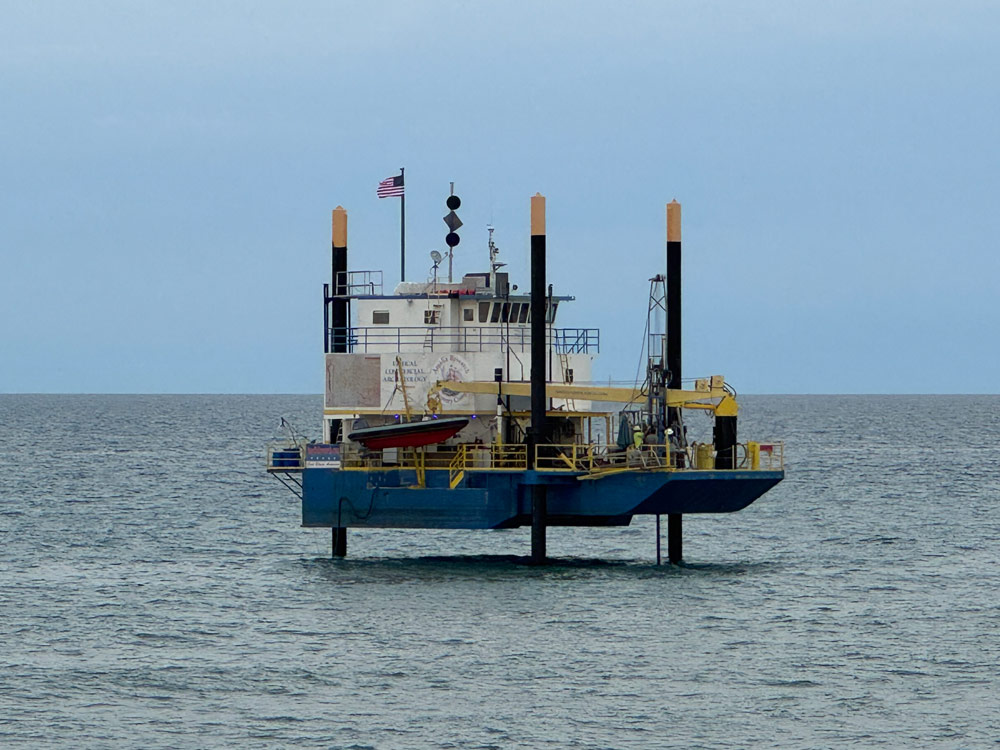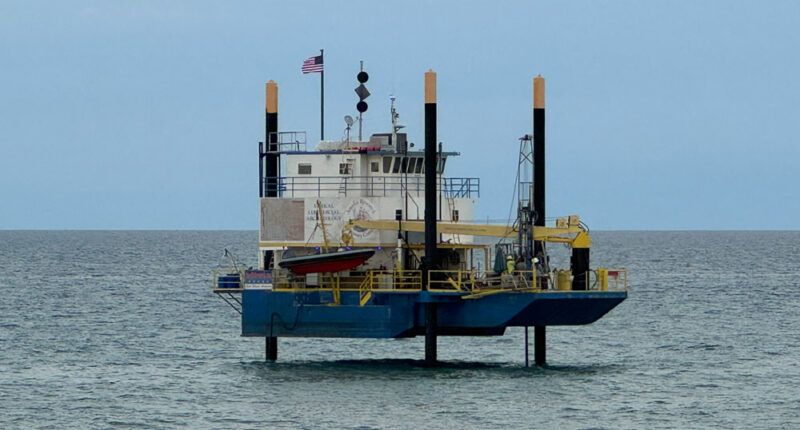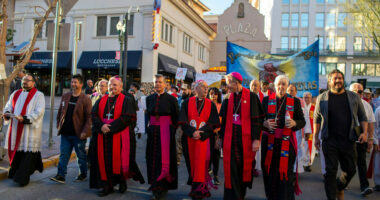
Following up on an announcement Wednesday by Google that it would be building a transatlantic cable and land it in Flagler Beach, Palm Coast and Flagler County for the first time this week disclosed what has been reported since last August–that a company would build a large data center in Palm Coast’s Town Center. But the two governments’ releases provided more boasts than information.
It’s been known since last August, when FlaglerLive first reported it, that Atlanta-based DC Blox was planning a huge data center on 34 acres in Palm Coast’s Town Center. The company secured an easement with Flagler Beach to land up to six cables on South 6th Street for up to $1.2 million in one-time payments to the city.
Since then the company and Palm Coast would not disclose any information about the Town Center project other than to describe it as a “state-qualified economic development project,” which means it’s getting taxpayer subsidies (either direct subsidies or through tax credits or rebates). The company and the city have not disclosed the amount. Nor have they disclosed much else beyond what Google, on its own, just revealed.
Even then, the city and the company continue to be mum about essential aspects of the Town Center data center beyond a cheery but cagey press release.
On Wednesday, Google announced that it will build “the only in-service fiber-optic cable between Florida and Europe,” called Sol (meaning “sun”), stretching from Spain to Flagler Beach, where it will connect at DC Blox’s Cable Landing Station before making its way to the Palm Coast data center, and from there to one of Google’s “really big data centers” in South Carolina.
The cable, operating in tandem with a nearly parallel cable landing in South Carolina, is part of Google’s global cloud infrastructure. It won’t affect service in Palm Coast so much as strengthen redundancies and reduce latency globally.
The Google announcement did not offer any information about the Town Center facility, nor provide a date for its cable landing locally.
DC Blox has submitted a preliminary conceptual plan to Palm Coast. The city is refusing to disclose it, citing confidentiality. The city’s position is questionable and contradicts the city’s own disclosures this week.
State law provides for confidentiality for 12 months if a company signs an economic incentive agreement. State law is just as clear: “the information is confidential and exempt… for 12 months after the date an economic development agency receives a request for confidentiality or until the information is otherwise disclosed, whichever occurs first.”
The company disclosed its plans in the main this week, after its representatives and Google’s met with city officials to craft the local announcement, Palm Coast Communications Director Brittany Kershaw said.
The press release the city issued included information by Craig McKinney, the city’s economic development director, according to an email thread the city provided. But it did not provide the size or footprint of the data center, its expected water and power consumption, or any information easements the company will require as its cables cut through from Flagler Beach to Town Center, what construction disruptions that will entail, what payments if any the company will make to the city for those easements (as in Flagler Beach), or when construction would begin. Kershaw acknowledged that “we need to make sure we’re ahead of this in letting people know it’s coming” so as to minimize impacts. “They are going to kind of trench through the city.”
The city’s press release stated that “construction on the DC BLOX facility will begin soon.” In fact, after a query on a more specific construction date, McKinney estimated that construction “is likely to begin” at the end of 2026, so the data center would not be operational until 2028.
Pre-review documents aside, the company has not yet submitted a technical site plan to Palm Coast’s Building Department. That site plan will be evaluated by the city’s technical review team, which will provide a series of “comments” to ensure that the building abides by land regulations, says Community Development Deputy Director Ray Tyner.
The building is expected to be larger than 50,000 square feet, so the site plan will require a review by the city’s planning board at a public hearing. If the building is larger than 100,000 square feet, it will require a review by the City Council. But even city planners have been largely in the dark. “I don’t even know what the total size is going to be, I’m just guessing it’s going to be a pretty large facility,” Tyner said. The regulatory process will take about six months.
The exact route of the cables will be determined by the site plan. Those routes will require the company to pull right-of-way permits, and pay associated fees.
The only new information the city’s release disclosed was that “The data center’s cooling system uses a recycled refrigerant, not a water-based system,” which means that “After the initial filling of the cooling tanks, water usage will be minimal,” that noise will be minimal as well, and that the data center will “Host secure colocation space for cable partners and local businesses,” but it did not explain how. None of the information could be documented. So the city was essentially saying: trust us.
There is no disclosure about the data center’s demand on the electric grid, though it is expected to be substantial.
And there were dubious claims, such as the assumption that the data center–a self-contained, highly secure and mission-specific node in a global network–will be a “catalyst for high-tech growth.” That may be true of a university campus focused on high tech, or a company seeding high-tech research, services or employment. It is not as true of what amounts to an electronic waystation for internet traffic, dependent more on geography than the local economy or workforce.
The data center itself will have a handful of employees. It will generate property taxes, but little else: when the City Council, responding to public opposition, declined to institute a utility franchise fee or a public service tax (it has declined to do so on four occasions since 2011), it also forfeited the considerable revenue the data center would have generated due to its power usage. The principal local beneficiary of the data center will be Florida Power and Light, not local taxpayers.
Meanwhile DC Blox has not completed all that it is required to complete with Flagler Beach government in order to get the green light there. Its agreement with the city requires it to submit engineering plans before the company starts construction.
“They still haven’t gotten the ‘final’ approval from the city commission to start ANY work here,” Flagler Beach City Commissioner Rick Belhumeur said in a text. “It’s a big assumption on their part that what they propose for ‘grounding beds’ will be accepted by the commission.”
DC Blox and Flagler Beach government tangled for several months over the easement agreement. The company at first wanted to pay the city just $100,000 for up to eight cables at two locations. The city found the offer inadequate. The company eventually agreed to double the payments, with an initial, $600,000 payment up front, whether it was landing one or three cables.
The company wanted to locate a landing station on city property–first, in a parking lot on South 6th Street, which would have made the parking lot unusable for anything else in the future, then through Veterans Park, which would have made 30 percent of the park unusable for a variety of things. The company finally agreed to limit its right of way to South 6th Street, and to six cables, not eight (as a Palm Coast press release stated).







